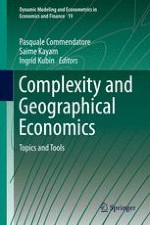2015 | OriginalPaper | Buchkapitel
Diffusion of Growth and Cycles in Continuous Time and Space
verfasst von : Tönu Puu
Erschienen in: Complexity and Geographical Economics
Aktivieren Sie unsere intelligente Suche, um passende Fachinhalte oder Patente zu finden.
Wählen Sie Textabschnitte aus um mit Künstlicher Intelligenz passenden Patente zu finden. powered by
Markieren Sie Textabschnitte, um KI-gestützt weitere passende Inhalte zu finden. powered by
